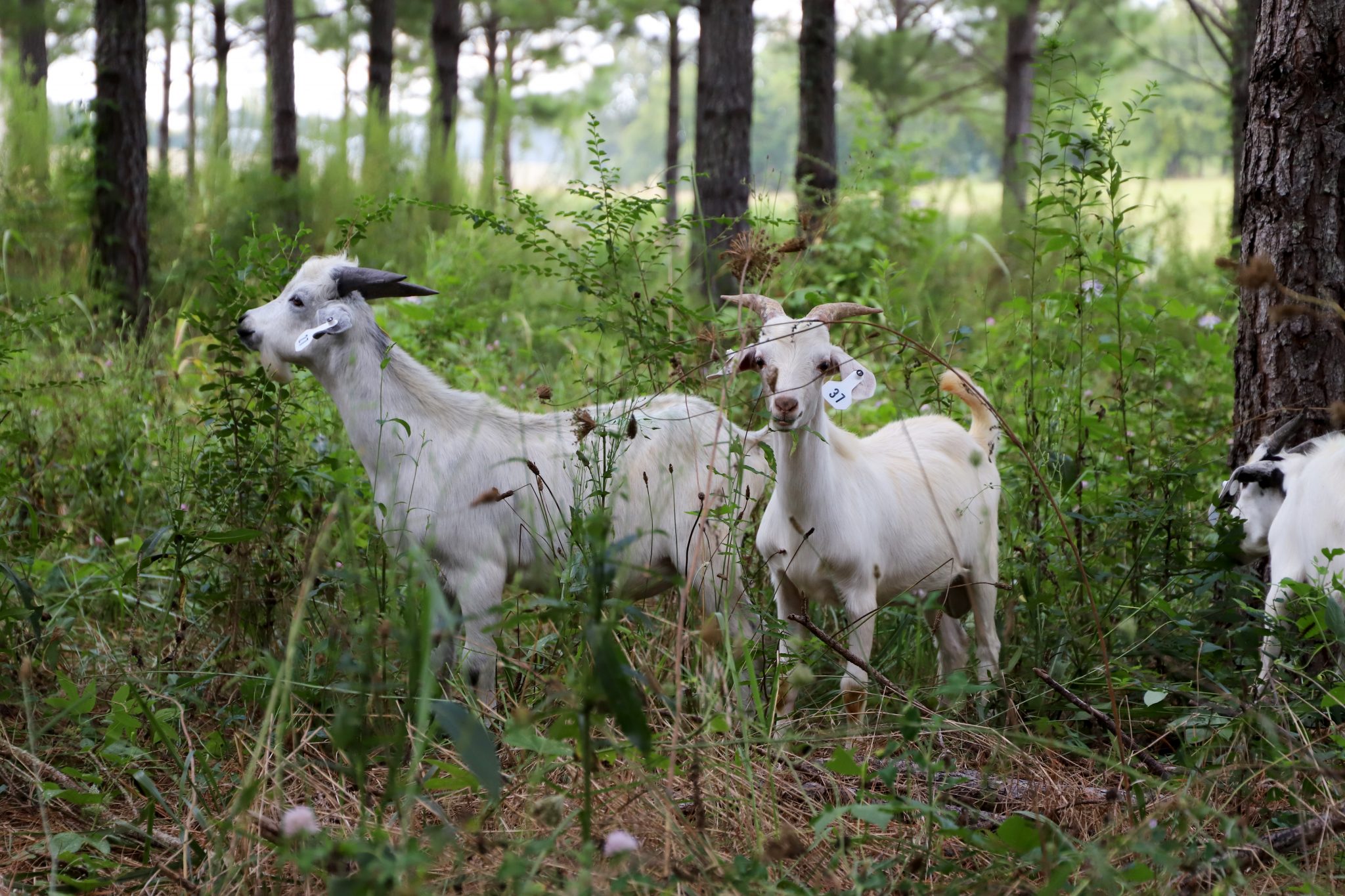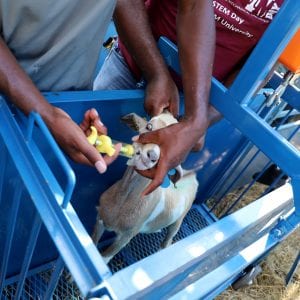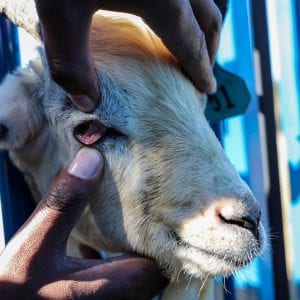Animals

Gastrointestinal parasites continue to be a major challenge for small ruminant producers in the Southeastern United States. Sheep and goats are more susceptible to internal parasites when compared to other livestock. Haemonchus contortus, commonly known as barber pole worms, cause most of the serious illness in sheep and goats. Barber pole worms live in the abomasum (fourth stomach compartment) of small ruminants and nourishes by sucking blood from the host. Infestations can cause remarkable reductions in reproductive performance and higher incidences of illness and death.
Reproduction Cycle of the Barber Pole Worm
Typically, Alabama weather in the spring and early fall are ideal climates for barber pole worms to reproduce. Males and females mate to produce eggs. The female worms have a red and white striped appearance, thus the name barber pole. Eggs are expelled in feces when animals defecate. Once eggs are deposited in a wet and warm environment, they hatch and develop into infective larvae. These larvae are capable of moving from feces on the ground up to 3 inches on grass blades or the stalks and leaves of other plants. When a sheep or goat ingests infective larvae while grazing, the infective larvae will continue to grow into adults inside the stomach of an animal while the reproduction cycle continues. If the environment is too hot and dry (approximately 100°F), eggs deposited in pasture will die within days or weeks. However, under cold conditions, especially in winter, eggs can stay dormant up to 180 days and still be infectious.
Symptoms
Sheep and goats are more vulnerable during the lambing and kidding season, especially in the spring. Lactating and young animals are also more susceptible because of their weak immune system. Common symptoms of barber pole worm infestation include the following:
- anemia that manifests pale mucus membranes in the lower part of an eyelid
- accumulation of fluid in sub-mandibular tissues (bottle jaw)
- dehydration
- diarrhea
- weight loss
- rough hair coat
Several environmental and management conditions have influenced the prominence of barber pole worms. Environmental factors include high temperatures, humidity, and rainfall. Management conditions include resistance to anthelmintic drugs because of excessive use, poor forage management, an inadequate nutritional plan, and limited availability of anthelmintic drugs that are approved by the Food and Drug Administration for small ruminant use.
- Figure 1. Administering worm medication to a young goat.
- Figure 2: Checking signs of anemia in a goat.
Control Options
At this time, there is no single method that will control internal parasites one hundred percent of the time. An integrated parasite management approach is required to control internal parasites.
Forage management. Ninety percent of barber pole worms live in the first ten inches of ground soil. Maintaining a grazing height above five inches will prevent animals from being exposed to many harmful parasites.
Lower stocking density. A lower stocking density will also reduce grazing pressure and fecal deposition in the same location. As a result, parasite population will be reduced per unit of land area.
Rotational grazing. Dividing pastures into paddocks and allowing animals to rotate through them over time will prevent animals from being exposed to parasites. The rest period in a highly infected area should be three to six months depending on environmental temperature.
Smart drenching. Anti-parasitic drugs are widely used to control internal parasites. However, over time, these drugs lose their efficacy as parasites become more resistant and harder to treat. Parasite resistance has become widespread, causing economic losses to producers. When treating animals, it is important to run a fecal egg count reduction test to determine if the animals are responding to the treatment. Also, drugs should be administered according to animal species. For details about anthelmintic drugs recommended for sheep and goats, visit www.FDA.gov and search for “New Antiparasitic Drugs Needed for Sheep and Goats.”
FAMACHA© technique. This technique is an individual animal treatment assessment that allows producers to classify animals based on anemia level and to decide which ones to treat. This system consists of examining the color of the goat’s lower eyelids and comparing it to a color-coded chart. For more details on FAMACHA©, visit the American Consortium for Small Ruminant Parasite Control website (wormx.info) and search for “FAMACHA©.”
Summary
Barber pole worms continue to be a major threat to the small ruminant industry. During lambing and kidding season, especially in spring and early fall, more precaution should be taken to control barber pole worms. An integrated parasite management approach is the best option to control barber pole worms. Producers are advised to consult a veterinarian before using anthelmintic drugs or before developing a parasite control program for their herd. For more details about parasite control in sheep and goats, visit the Sheep and Goats section of the Alabama Extension website, www.aces.edu.



